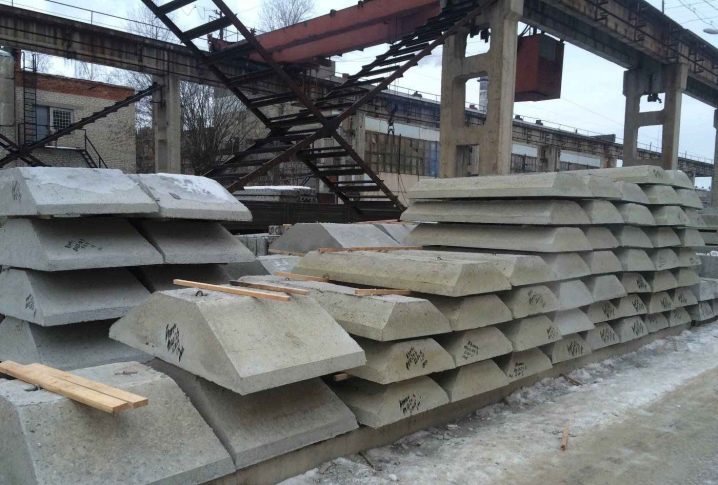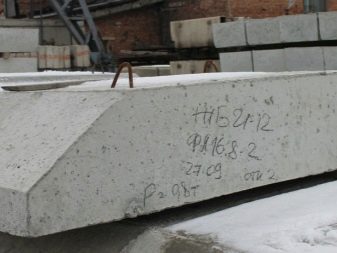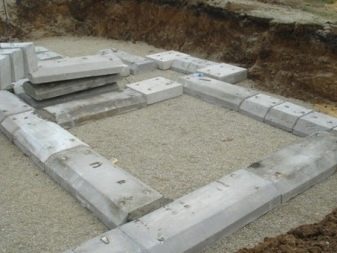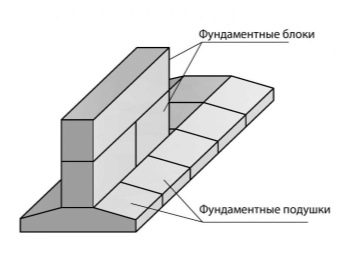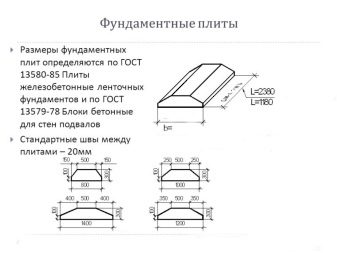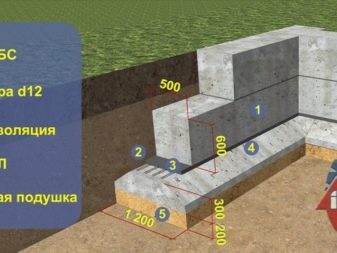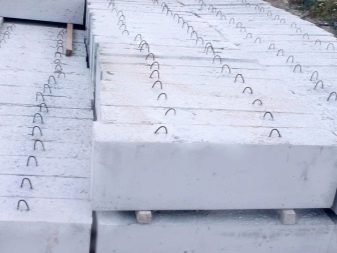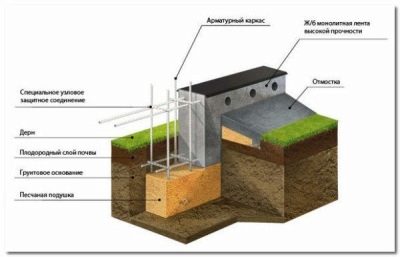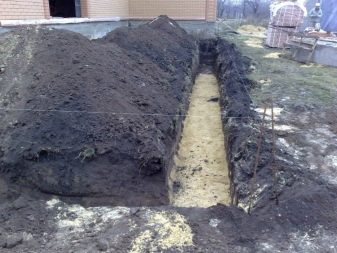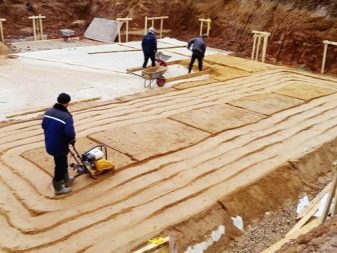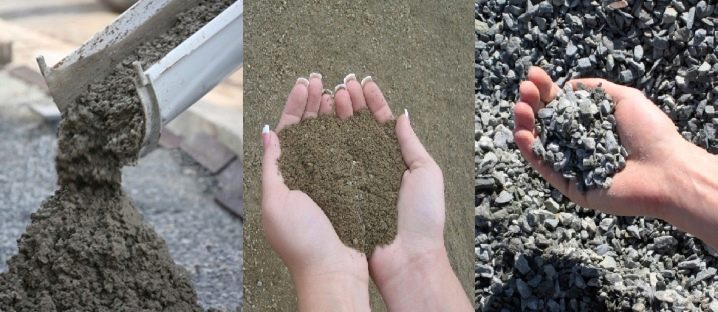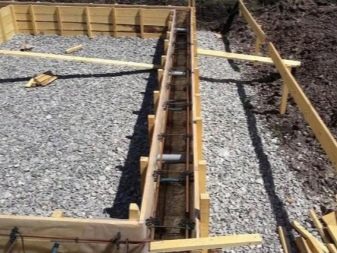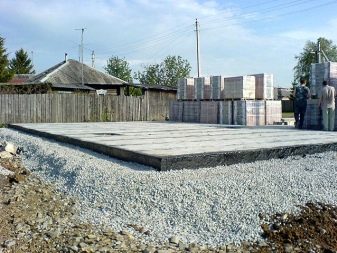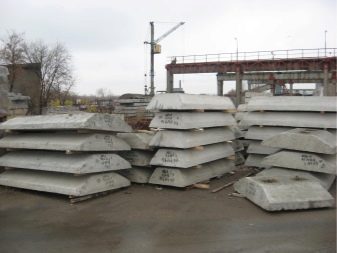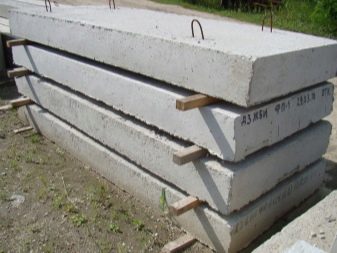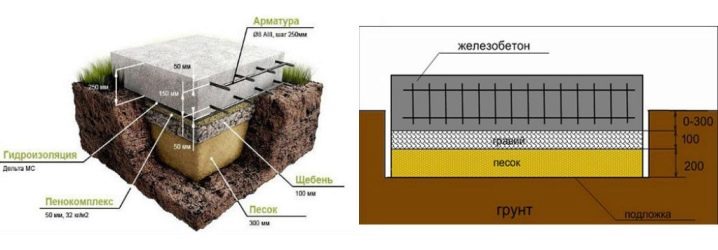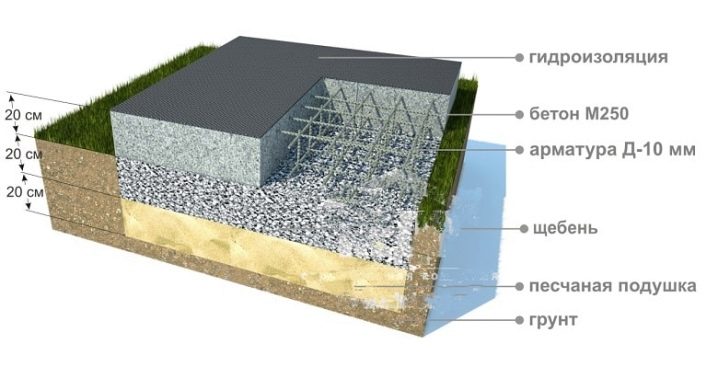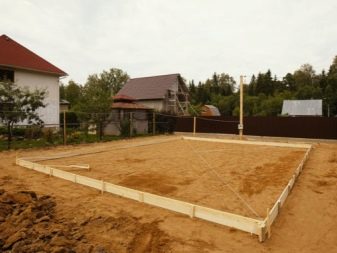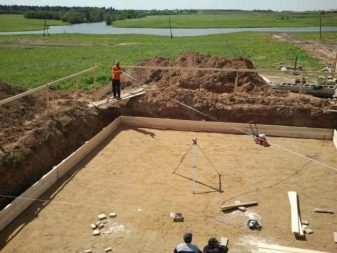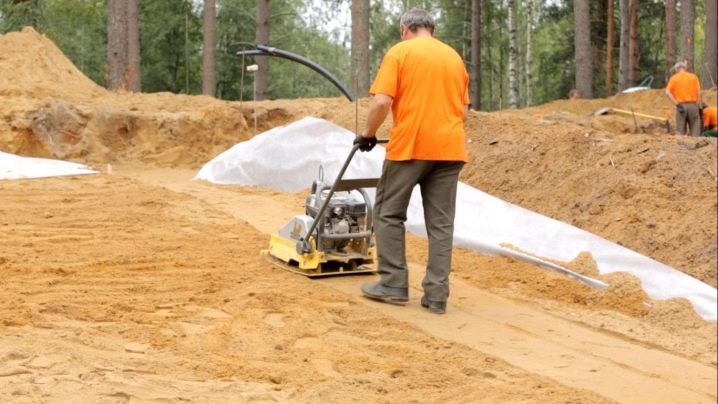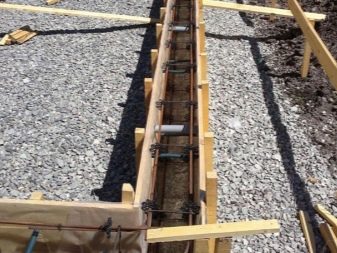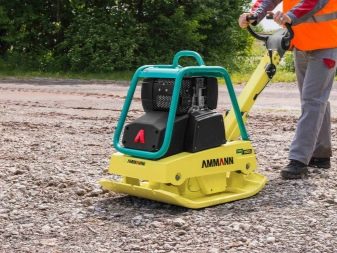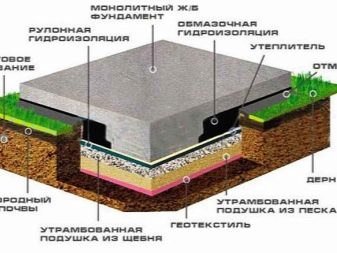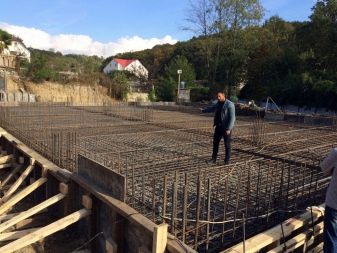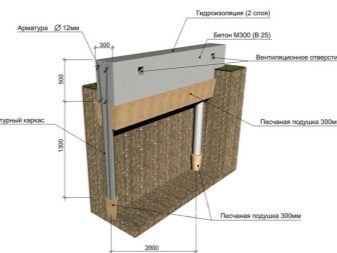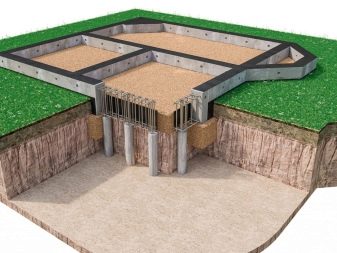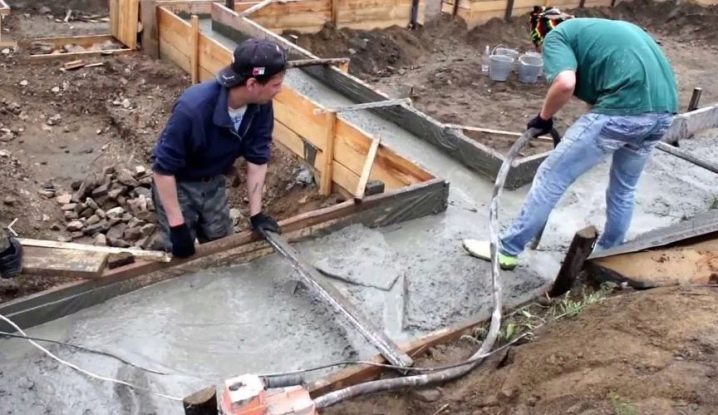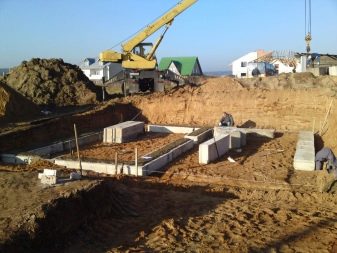Foundation pillows: what is it and what is needed?
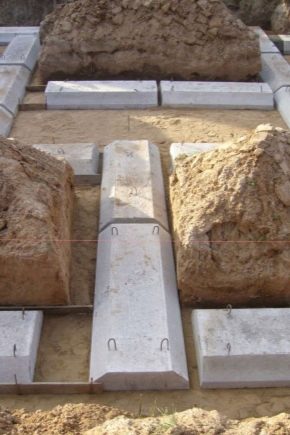
The foundation of the building is one of the main structural elements responsible for the overall stability of the structure and the duration of its service life. The base of any structure is experiencing serious weight and vibration loads, which are associated with the mobility of the soil, the number of floors, and the characteristics of the operation of the structure. In order to increase the strength and durability of the structure, a pillow is laid under the foundation, which multiplies the operational characteristics of the object.
Special features
The foundation cushion is an artificial base,which is laid on top of the sand dumping pit and is formed from various materials. Foundation cushion performs several important functions.
- Alignment This mission is one of the main and is to eliminate the defects of the foundation pit that arise after the work of construction equipment. For such purposes, usually used sand cushion. In the case of laying the filler base foundation, the equipment cushion is not a prerequisite: it is enough to pour concrete solution that effectively fills all existing voids and cavities, and will level out without using additional measures.
- Havereduced load on the ground. The foundation cushion protects the ground from movement and subsidence, acting as a compensator and taking the weight load on itself. Through its formation, the replacement of weak and heaving soils on the sand occurs, as a result of which the bearing capacity of the soil increases substantially and the strength of the foundation is ensured.
- Drainage function. When arranging a cushion of sand with a thickness of 30 cm, the capillary permeability of the soil is disturbed.This leads to the impossibility of raising moisture from the soil to the foundation, as well as to the removal of excessive moisture from precipitation to a lower level relative to the foundation.
Technical requirements
The device of the foundation cushion is regulated by SNiP and GESN, therefore, in its formation it is important to take into account all the requirements and standards. So, in the construction of reinforced concrete pillows, guided by GOST 13580, adopted in the distant 1985, but still not lost its relevance. The document regulates the norms of arrangement and the range of concrete cushions for the foundations of industrial and civil objects, suggesting the presence of heavy walls.
Layer elements are structures that include heavy concrete and steel reinforcement.
Such blocks should strictly comply with all requirements of GOST, and have high strength, resistance to seismic loads, extremely low temperatures and corrosion. The concrete pad used in the strip foundation significantly increases the width of the support base, which, in turn, leads to a decrease in the unit load per unit area.This allows us to consider the base pad as the main structural element, which assumes the entire weight load. That is why the construction of the foundation, it is important to strictly comply with all necessary norms and standards.
Kinds
Foundation pillows can be made of various materials, the choice of which depends on the number of floors, soil conditions, seismicity and the purpose of the structure.
Sand
The most inexpensive building material used in the arrangement of pillows for light frame or wooden one-story buildings. With a layer thickness of 25–30 cm, the sand reliably protects the base of the house and acts as a compensator when the soil shrinks. At the device of a pillow it can be used both river, and a career type of sand. The main advantages of using this inexpensive material are its availability, ease of installation, low thermal conductivity, significantly reducing heat loss in a building and high compaction rates.
With the help of a sandy layer, you can easily eliminate the unevenness of the bottom of the pit or landscape.
The disadvantages of sand include the impossibility of its use in the construction of multi-storey buildings andindustrial enterprises, as well as the irrationality of its use on soils with a high groundwater storage. In cases where the level of the aquifer is unstable and is experiencing seasonal fluctuations, a drainage system should be installed before the construction of the cushion.
Sand and gravel
This option is the most common for the formation of pillows, it is widely used in the construction of private houses and cottages. Such a pillow is formed on weakly-bearing soils and needs careful tamping. The mixture must have a medium-grained structure, the use of sand dust or fine sand is unacceptable.
The material is used in cases when you need a reliable foundation for a log or log house, equipped with a loft or having a large area.
Rubble
Pretty durable material, evenly distributing the weight load over the entire area of the base. It is used for the formation of base pillows in homes not exceeding two floors. For the formation of the crushed stone layer, sand and gravel are used as auxiliary components, the proportion of which should be at least 30% of the total thickness.
Concrete
It is the most expensive and reliable material, and is used in the construction of multi-storey residential buildings and industrial buildings. The concrete pad acts as a compensator for the reaction of problematic heaving soils and assumes the full weight of the structure. Concrete pad is a block of reinforced concrete, labeled with FL, which means the foundation tape
The density of such a block is not less than 2.5 t / m3, which is a very high indicator and indicates the increased strength of the monolithic plate.
Gravel
The use of this material as a pillow in the construction of multi-storey buildings suggests the presence of large fractional elements in the composition, the size of which varies from 2 to 4 cm.
Each of the materials used to create a pillow under the foundation has unique technical characteristics or combines several properties inherent to its composite components. So, in the formation of the crushed stone layer, sand and gravel are required components, without which the functioning of the pillow will not be complete. Therefore, when choosing the right material, it is necessary to take into account the combination of all factors affecting the strength and durability of the foundation.
Device
Installation of some types of base pillows can be carried out independently without the use of expensive equipment and the involvement of specialists. The most effective, but at the same time inexpensive way to arrange the interlayer, is the installation of a sand-gravel cushion, the installation technology of which involves several stages.
Initially, you should dig a trench, the depth of which will correspond to the beginning of a dense layer of soil. Then coarse river sand should be poured into the prepared moat. Sleeping should be done in small portions, gradually forming uniform layers 15 cm thick, and alternately shedding them and tamping.
Between the layers of sand stacked layers of gravel. Their thickness can vary from 5 to 25 cm, and depends on the type of soil and the height of the house. Sand-gravel pillow is recommended to equip under the whole building: this will ensure uniform shrinkage of the building and prevent cracks on the walls. The width of the pillow should protrude beyond the foundation by 30 cm.
An important condition for the arrangement of this type of layer is particularly careful tamping of each layer.The density of the freshly poured base for the foundation should be 1.6 g / cm3 relative to the density of the soil.
Careful attention should be paid to the choice of sand. In its composition should not be interspersed with clay, otherwise it may lead to swelling of the pillow in contact with moisture.
Similarly, the device is made pillows from rubble. In this case, the two lower layers are sand and gravel, on which a layer of crushed stone with a thickness of 25 to 30 cm is poured on top. The horizontal position of the laid layer should be checked using a building level. The dimensions of the pillow must exceed the dimensions of the foundation by 50 cm.
The arrangement of a sand pillow is quite simple. For its installation, you first need to make a markup and remove the soil to the required depth. Then, at the bottom of the excavated trench, you need to lay a geotextile, which will serve as a foundation protection from moisture. Then you can begin to fill the drainage layer, for the formation of which suitable coarse sand.
The thickness of the drainage should be at least 25 cm. Then you should proceed to the backfilling of river or quarry sand, with thorough tamping and abundant moistening of each layer.
The quality of tamping can be checked as follows.: you need to step on a pillow with both feet, and then get off it and check for traces of shoes. There should be no traces on correctly sanded sand. Otherwise, you should resume work and achieve a high density of the created cushion.
The calculation of the thickness of the main layer is made individually and depends on the area of the house and the material of construction of the walls. In any case, the total thickness of the sand cushion should be at least 15 cm. Upon completion of the installation work, you need to check the horizontal position again, after which you can start building the formwork and pour the foundation.
Recommendations
Before proceeding to the choice of material to create a pillow, it is necessary to consider a number of points.
- During the construction of the tape foundation, the thickness of the layer should not be less than 25 cm, and the width should be 10 cm larger than the tape on both sides. The process of tamping sand and gravel interlayers is best done using a vibrating plate. At the end of tamping the pillow must be carefully leveled and put a layer of waterproofing on it.
- During the construction of a monolithic foundation, the arrangement of the cushion is made on the entire area of the excavated pit.For this, its bottom is leveled and covered with rubble or gravel. The thickness of the layer should be 15 cm. 10 cm of sand is poured on top of the rubble, after which the whole cake is thoroughly tamped with a vibrating plate. Next, the layer is waterproofed and the installation of the foundation begins.
- For columnar and pile foundations, it is recommended to equip a sand and gravel pad at least 30 cm thick. Its width should be 20 cm larger than the pillar. The pillow must be covered with polyethylene or roofing felt on top, which will prevent it from absorbing moisture from the poured concrete solution.
- For two-and three-storey private houses sometimes use a homemade concrete pillow. To do this, at the bottom of the pit, gravel is poured with a layer of 10 cm and is well tamped. Then installation of formwork, 30 cm in height, is carried out. To strengthen the structure, reinforcement can be made from rubble or reinforcing bars. Next, you should prepare a concrete solution and pour it into the prepared formwork. After the concrete has completely hardened, it is recommended to waterproof the cushion.
Foundation pillows are an effective solution to the problem of weak soils in the construction of buildings and structures.They help to form a solid foundation, strengthen the foundation and significantly extend the life of the structure.
For more information on how to make a foundation pillow with your own hands, tell the following video.
